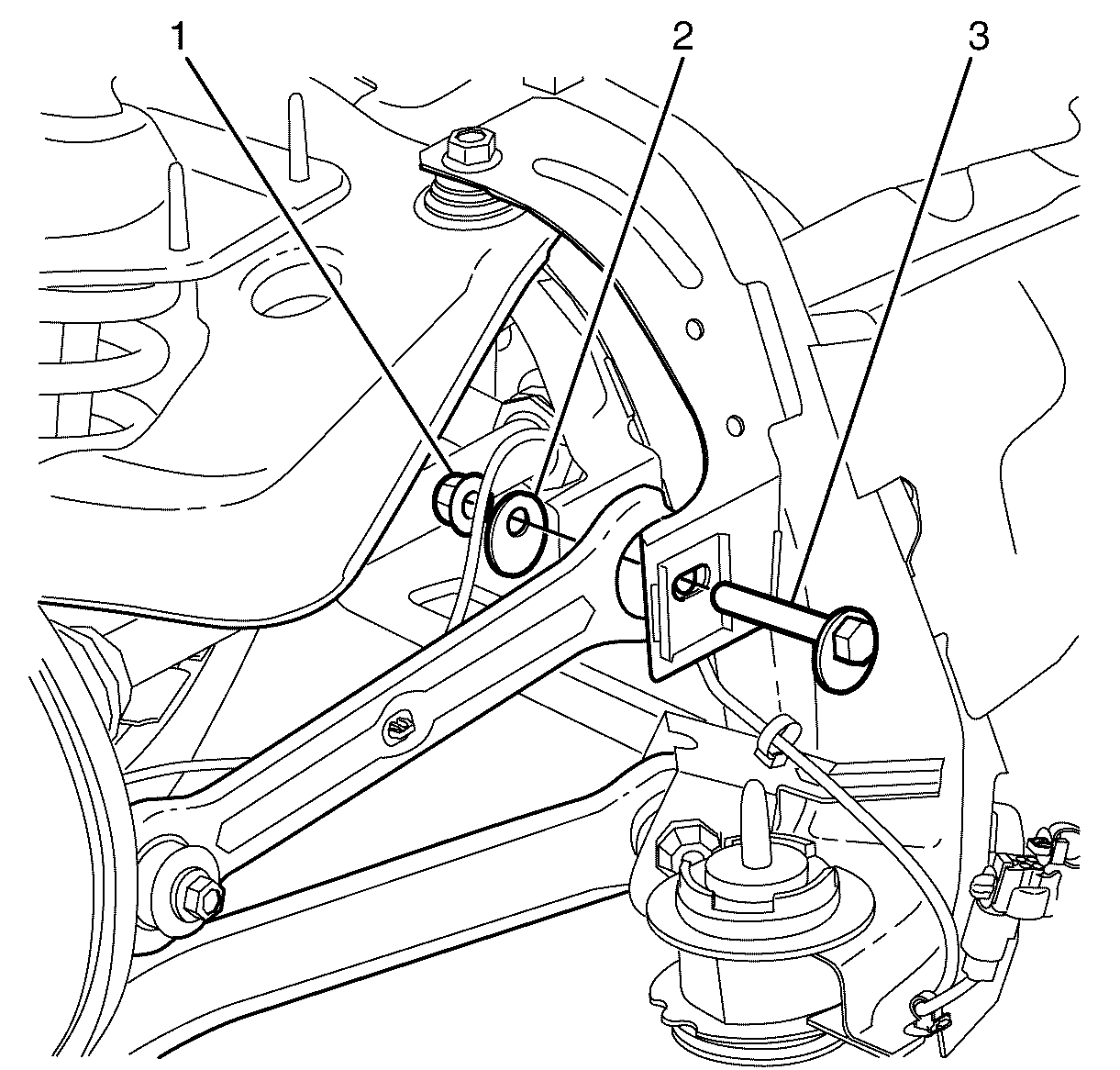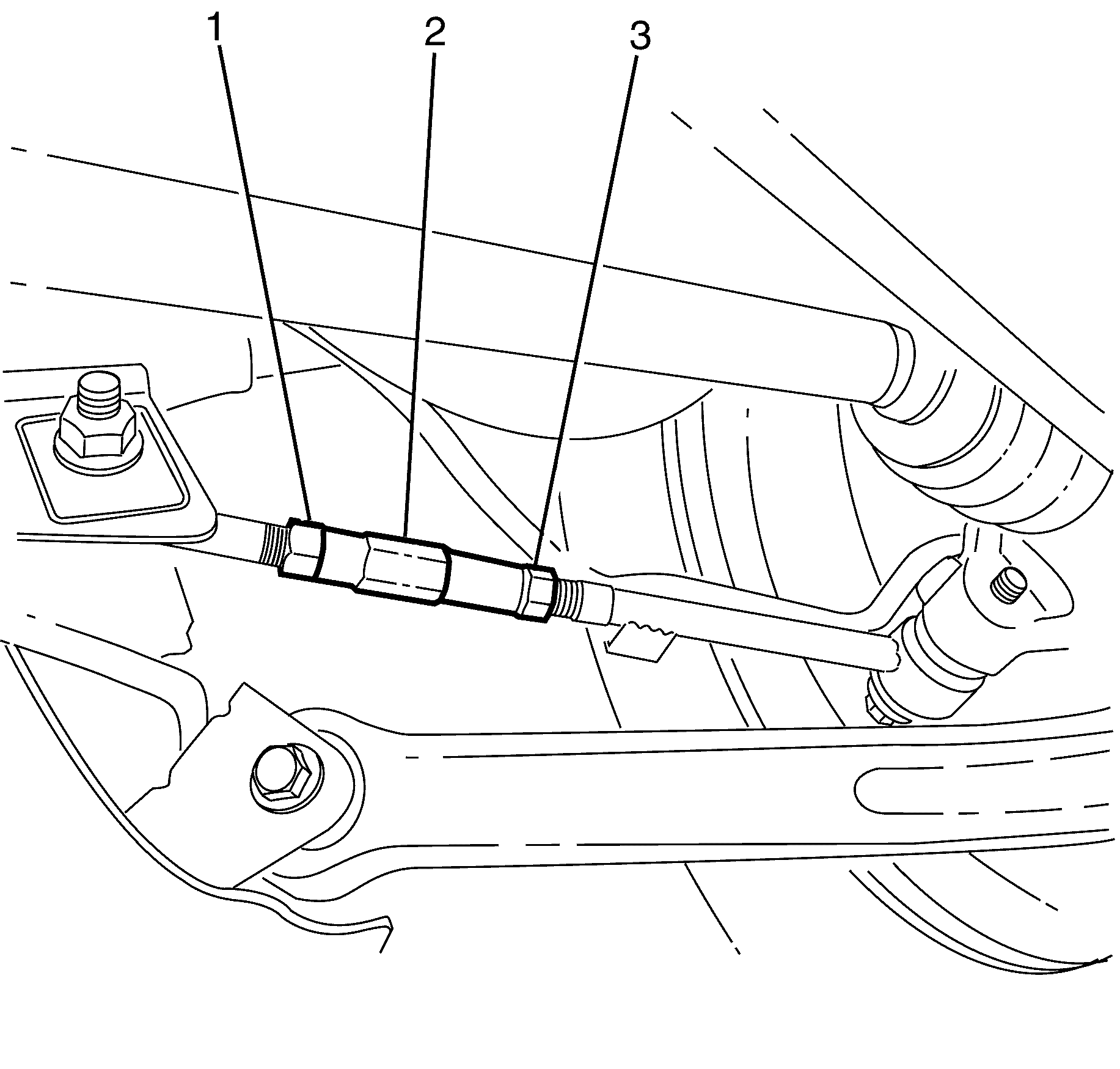After - 13 Aug 2007
The rear suspension has been designed to maximize the ride and road handling characteristics, as well as, the road isolation of the vehicle.
The rear suspension absorbs the impact of the tyres travelling over irregular road surfaces and dissipates this energy throughout the suspension system.
This process isolates the vehicle occupants from the road surface.
The rate at which the suspension dissipates the energy and the amount of energy that is absorbed is how the suspension defines the vehicles ride characteristics. Ride characteristics are designed into the suspension system and are not adjustable. The ride characteristics are mentioned in this description in order to aid in the understanding of the functions of the suspension system.
The suspension system must allow for the vertical movement of the tyre and wheel assembly as the vehicle travels over irregular road surfaces while maintaining the tyre's contact and horizontal relationship to the road.
The knuckle is suspended between a lower and an upper control arm.
The lower control arm attaches to the knuckle at the outermost point of the control arm. The innermost point of the lower control arm is attached to the subframe through bushings.

A nut (5) and bolt (1) with eccentric washers (2) connect the lower control arm (4) to the subframe (3), this arrangement provides camber adjustment of the rear suspension.
The supporting function of the lower control arm is further enhanced by the Y-Link, which extends between the knuckle and the subframe.
The upper control arm attaches from the knuckle at the outermost point of the control arm. The innermost end of the upper control arm attaches to the subframe through pivot and ball joint bushings.
The I-Link provides a side attachment between the knuckle and the subframe.

Loosen the I-Link retaining lock nut (1) from the I-Link retaining bolt (3). Rotate the I-Link retaining bolt (3) which also rotates the eccentric washer (2) to adjust the rear toe.
The rear strut assembly attaches the lower control arm to the body of the vehicle.
The knuckle is allowed to travel up and down independent of the vehicle body structure and frame.
This up and down motion of the knuckle as the vehicle travels over bumps is absorbed predominantly by the coil spring. This spring is retained under tension within the strut assembly. A shock absorber is used in conjunction with this system in order to dampen the oscillations of the coil spring. The shock absorber is filled with oil and has a moveable shaft that connects to a piston inside. Valves inside the shock absorber offer resistance to oil flow and consequently inhibit rapid movement of the piston and shaft. Each end of the shock absorber is connected in such a fashion to utilize this recoil action of the spring alone. Each end of the strut is designed as the connection point of the suspension system to the vehicle and acts as the coil spring seat. This allows the strut to utilize the dampening action to reduce the recoil of a spring alone.
The subframe is bolted to the body of the vehicle. The subframe to body attaching bolts incorporate a tapered boss near the head of the bolt on the front bolts, to assist in the alignment during assembly. The front and rear mount bushings enhance the road isolation characteristics of the rear suspension structure.
A stabiliser bar is mounted to the subframe by two brackets and insulating rubbers. The link connecting the stabiliser bar to each lower control arm has a ball joint socket stud and nut, at each end of it.
There are numerous configurations for each suspension option, depending on body type and powertrain combination. For further information regarding the identification of which suspension option is fitted to a particular vehicle. Refer to Vehicle, Engine and Transmission ID and VIN Location, Derivative and Usage in General Information.
For all other information regarding the suspension specification fitted to a particular vehicle, refer to Fastener Tightening Specifications in Rear Suspension. Although the rear suspension components are lubricated for life and require no routine lubrication, they should be inspected periodically for damage and wear.
Up to - 13 Aug 2007
The rear suspension has been designed to maximize the ride and road handling characteristics, as well as, the road isolation of the vehicle.
The rear suspension absorbs the impact of the tyres travelling over irregular road surfaces and dissipates this energy throughout the suspension system.
This process isolates the vehicle occupants from the road surface.
The rate at which the suspension dissipates the energy and the amount of energy that is absorbed is how the suspension defines the vehicles ride characteristics. Ride characteristics are designed into the suspension system and are not adjustable. The ride characteristics are mentioned in this description in order to aid in the understanding of the functions of the suspension system.
The suspension system must allow for the vertical movement of the tyre and wheel assembly as the vehicle travels over irregular road surfaces while maintaining the tyre's horizontal relationship to the road.
The knuckle is suspended between a lower and an upper control arm.
The lower control arm attaches to the knuckle at the outermost point of the control arm. The innermost point of the lower control arm is attached to the subframe through bushings.

The two eccentric washers (2) of the bolt (1) and under the nut (2) connecting the lower control arm (4) to the subframe (5) are used to adjust the camber of the rear suspension.
The supporting function of the lower control arm is further enhanced by the Y-Link, which extends between the knuckle and the subframe.
The upper control arm attaches from the knuckle at the outermost point of the control arm. The innermost end of the upper control arm attaches to the subframe through pivot and ball joint bushings.
The I-Link provides a side attachment between the knuckle and the subframe.

Loosen the I-Link adjuster lock nuts (1, 3) from the I-Link adjuster (2). Rotate the I-Link adjuster (2) to adjust the camber.
The rear strut assembly attaches the lower control arm to the body of the vehicle.
The knuckle is allowed to travel up and down independent of the vehicle body structure and frame.
This up and down motion of the knuckle as the vehicle travels over bumps is absorbed predominantly by the coil spring. This spring is retained under tension within the strut assembly. A shock absorber is used in conjunction with this system in order to dampen the oscillations of the coil spring. A shock absorber is a basic hydraulic cylinder, it is filled with oil and has a moveable shaft that connects to a piston inside. Valves inside the shock absorber offer resistance to oil flow and consequently inhibit rapid movement of the piston and shaft. Each end of the shock absorber is connected in such a fashion to utilize this recoil action of a spring alone. Each end of the strut is designed as the connection point of the suspension system to the vehicle and acts as the coil spring seat. This allows the strut to utilize the dampening action to reduce the recoil of a spring alone.
The subframe is bolted to the body of the vehicle. The subframe to body retaining bolts incorporate a tapered boss near the head of the bolt on the front bolts, to assist in the alignment during assembly. The front and rear mount bushings enhance the road isolation characteristics of the rear suspension structure.
A stabiliser bar is mounted to the subframe by two brackets and insulating rubbers. The link connecting the stabiliser bar to each lower control arm has a ball joint socket stud and nut, at each end of it.
There are numerous configurations for each suspension option, depending on body type and powertrain combination. For further information regarding the identification of which suspension option is fitted to a particular vehicle, refer to Vehicle, Engine and Transmission ID and VIN Location, Derivative and Usage .
For all other information regarding the suspension specification fitted to a particular vehicle, refer to Fastener Tightening Specifications .
Although the rear suspension components are lubricated for life and require no routine lubrication, they should be inspected periodically for damage and wear.
